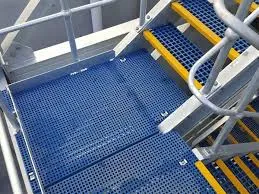
-
 Afrikaans
Afrikaans -
 Albanian
Albanian -
 Amharic
Amharic -
 Arabic
Arabic -
 Armenian
Armenian -
 Azerbaijani
Azerbaijani -
 Basque
Basque -
 Belarusian
Belarusian -
 Bengali
Bengali -
 Bosnian
Bosnian -
 Bulgarian
Bulgarian -
 Catalan
Catalan -
 Cebuano
Cebuano -
 China
China -
 China (Taiwan)
China (Taiwan) -
 Corsican
Corsican -
 Croatian
Croatian -
 Czech
Czech -
 Danish
Danish -
 Dutch
Dutch -
 English
English -
 Esperanto
Esperanto -
 Estonian
Estonian -
 Finnish
Finnish -
 French
French -
 Frisian
Frisian -
 Galician
Galician -
 Georgian
Georgian -
 German
German -
 Greek
Greek -
 Gujarati
Gujarati -
 Haitian Creole
Haitian Creole -
 hausa
hausa -
 hawaiian
hawaiian -
 Hebrew
Hebrew -
 Hindi
Hindi -
 Miao
Miao -
 Hungarian
Hungarian -
 Icelandic
Icelandic -
 igbo
igbo -
 Indonesian
Indonesian -
 irish
irish -
 Italian
Italian -
 Japanese
Japanese -
 Javanese
Javanese -
 Kannada
Kannada -
 kazakh
kazakh -
 Khmer
Khmer -
 Rwandese
Rwandese -
 Korean
Korean -
 Kurdish
Kurdish -
 Kyrgyz
Kyrgyz -
 Lao
Lao -
 Latin
Latin -
 Latvian
Latvian -
 Lithuanian
Lithuanian -
 Luxembourgish
Luxembourgish -
 Macedonian
Macedonian -
 Malgashi
Malgashi -
 Malay
Malay -
 Malayalam
Malayalam -
 Maltese
Maltese -
 Maori
Maori -
 Marathi
Marathi -
 Mongolian
Mongolian -
 Myanmar
Myanmar -
 Nepali
Nepali -
 Norwegian
Norwegian -
 Norwegian
Norwegian -
 Occitan
Occitan -
 Pashto
Pashto -
 Persian
Persian -
 Polish
Polish -
 Portuguese
Portuguese -
 Punjabi
Punjabi -
 Romanian
Romanian -
 Russian
Russian -
 Samoan
Samoan -
 Scottish Gaelic
Scottish Gaelic -
 Serbian
Serbian -
 Sesotho
Sesotho -
 Shona
Shona -
 Sindhi
Sindhi -
 Sinhala
Sinhala -
 Slovak
Slovak -
 Slovenian
Slovenian -
 Somali
Somali -
 Spanish
Spanish -
 Sundanese
Sundanese -
 Swahili
Swahili -
 Swedish
Swedish -
 Tagalog
Tagalog -
 Tajik
Tajik -
 Tamil
Tamil -
 Tatar
Tatar -
 Telugu
Telugu -
 Thai
Thai -
 Turkish
Turkish -
 Turkmen
Turkmen -
 Ukrainian
Ukrainian -
 Urdu
Urdu -
 Uighur
Uighur -
 Uzbek
Uzbek -
 Vietnamese
Vietnamese -
 Welsh
Welsh -
 Bantu
Bantu -
 Yiddish
Yiddish -
 Yoruba
Yoruba -
 Zulu
Zulu
Lightweight FRP Car
Lightweight FRP Vehicles The Future of Automotive Design
In the ever-evolving world of automotive technology, one material stands out for its unique properties and transformative potential Fiberglass Reinforced Plastics (FRP). Known for its superior strength-to-weight ratio, FRP is becoming an essential component in the design and production of lightweight vehicles. This article explores the advantages of FRP in automotive applications and how it is shaping the future of car manufacturing.
Lightweight vehicles have become a significant focus in the automotive industry, driven by the demand for greater fuel efficiency and reduced emissions. Traditional materials like steel and aluminum, while strong, can contribute to unnecessary vehicle weight, leading to lower fuel efficiency. In contrast, FRP offers a compelling solution that allows manufacturers to reduce weight without sacrificing structural integrity. This is particularly important in electric vehicles (EVs), where every kilogram counts toward maximizing range and performance.
FRP's composition consists of a polymer matrix reinforced with fiberglass, providing remarkable durability and resistance to corrosion. This characteristic not only extends the lifespan of vehicles but also reduces maintenance costs over time. Moreover, the ability to mold FRP into complex shapes enables innovative designs that are not possible with conventional materials. As a result, manufacturers can create aesthetically pleasing vehicles that also perform exceptionally well.
similar titles for frp car lightweight vehicle made of ...

Another significant advantage of FRP is its cost-effectiveness in the long run. While the initial investment in FRP materials may be higher compared to traditional metals, the reduction in weight leads to lower energy consumption and enhanced fuel economy. Additionally, lighter vehicles generally require less power for acceleration, which is particularly beneficial for electric drivetrains. Thus, the integration of FRP can contribute to significant cost savings for consumers over the vehicle's lifetime.
Safety is also enhanced with the use of FRP. The material's ability to deform under impact can absorb energy during accidents, reducing the risk of injury to passengers. Furthermore, the flexibility of FRP means that vehicles can be designed with crumple zones that provide additional protection.
As the automotive industry continues to evolve toward sustainability, the demand for lightweight, efficient vehicles is only set to grow. The development of FRP technology is at the forefront of this movement, offering manufacturers the opportunity to innovate while meeting regulatory demands for reduced emissions.
In conclusion, lightweight vehicles made with FRP represent a significant advancement in automotive design. With their combination of strength, durability, and aesthetic flexibility, FRP vehicles are poised to revolutionize the way we think about transportation. As consumers become increasingly environmentally conscious, the adoption of FRP technology will play a pivotal role in shaping a sustainable future for the automotive industry, making it an exciting area to watch as we drive toward new horizons.
Latest news
-
Exploring the Benefits of Top Hammer Drifter Rods for Enhanced Drilling PerformanceNewsJun.10,2025
-
High-Precision Fiberglass Winding Machine for GRP/FRP Pipe Production – Reliable & Efficient SolutionsNewsJun.10,2025
-
FRP Pipes & Fittings for Shipbuilding - Corrosion-Resistant & LightweightNewsJun.09,2025
-
Premium FRP Flooring Solutions Durable & Slip-ResistantNewsJun.09,2025
-
Premium Fiberglass Rectangular Tanks Durable & Lightweight SolutionNewsJun.09,2025
-
Tapered Drill String Design Guide Durable Performance & UsesNewsJun.09,2025









